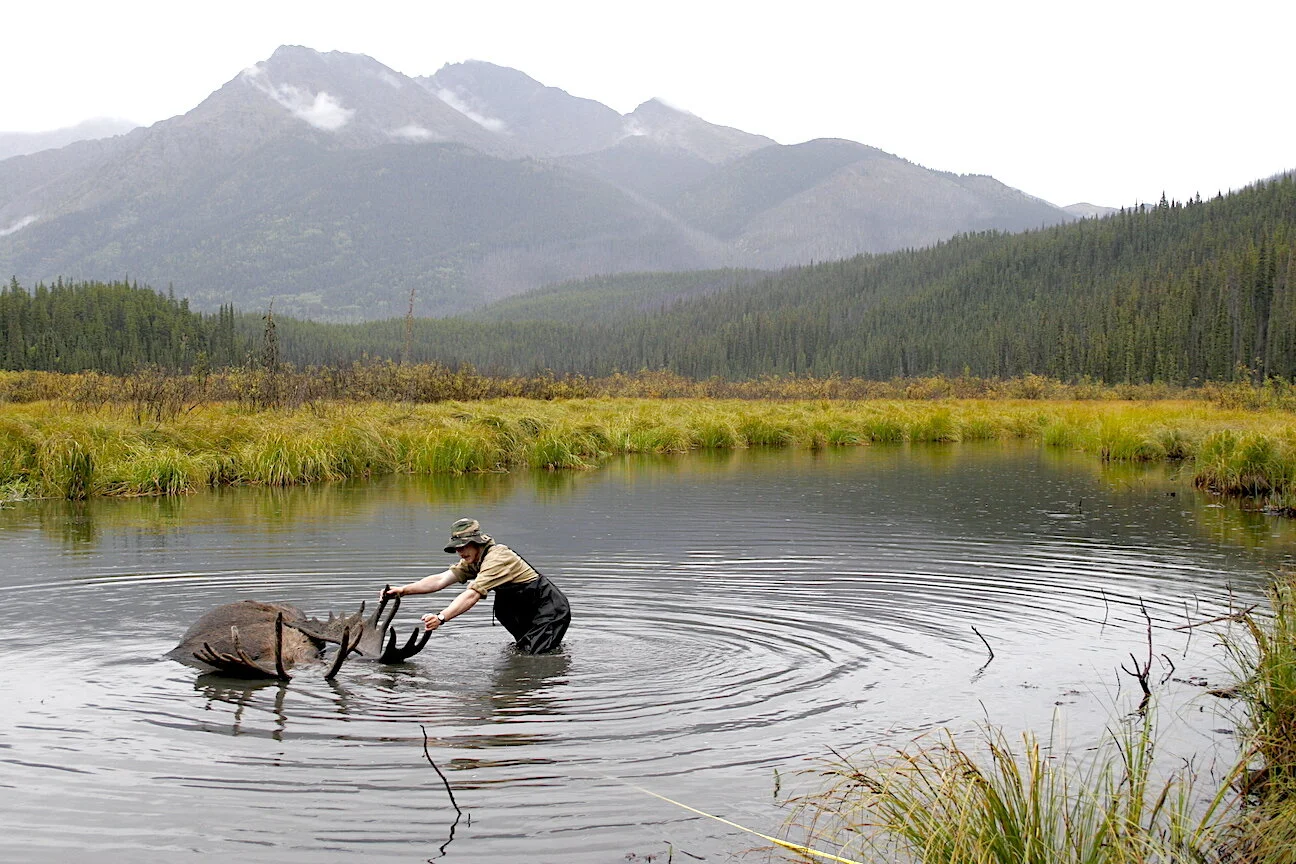Bull Elk, Bullets and Rifles, Part 4
Is the 180-grain Nosler Accubond bullet at 3,000 fps delivered from just 40 yards away with a 300 Winchester Magnum enough to knock down an elk?
Here is part four and the final installment of our performance review of elk rifles, cartridges and bullets I’ve worked with over the years. Our intent is to determine if there are any clear differences in killing efficiency among the variety I’ve used. General consensus seems to be that the larger caliber, heavier bullets and higher velocities should perform best, but this isn’t always the case, as detailed in earlier blogs.
Of course, this is anecdotal evidence, not scientific testing, but that’s the best anyone can hope for in uncontrolled conditions. Even if we could perfectly arrange for every bull to be the same size standing the same way with the same bullets at the same impact velocities applied to precisely the same spot, we cannot control their adrenaline levels, blood pressure, relative strength or energy levels or what they ate for lunch.
Nonetheless, I try to be observant, impartial to any tools I’m using and honest in my assessments. I have no favorite, beloved rifles, cartridges or bullets. Many have worked well for me, some have not. Here is the story of one that did, though not quite the way many of us might think it should have.
In Part 3 of this series I related how a bull about 70 yards away absorbed three 160-grain Nosler Accubonds launched from a Mossberg Patriot with barely a ripple. You can watch this reaction in this video. This time, let me describe how a 300 Win. Mag. impressed a Colorado bull.
300 WM Headstamp
Hunt #10. 300 Win. Mag., Ruger Hawkeye, Nosler 180-grain Accubond, Leupold VX-6 3-18x44, 2015, Colorado:This was a meat hunt during Colorado’s regular, second season. No special draw tags, trophy units or special seasons. Our only advantage was we were hunting with Fulldraw Outfitters on Fred Eichler’s small, private ranch bordering National Forest lands. Hunting pressure there might push bulls to us. It did.
Despite a steady rain, my guide, Seth, and I sloshed into the hills our first evening, crossed fresh tracks and heard a bull bugle. Seth led me to a ridge where he thought the bull might want to go en route to a distant alfalfa field. The young man set up about 30 yards behind me and bugled perfectly. The bull answered. I threw in some cow mews and soon saw a cow and calf trotting in. While they were out of sight I leveled the Ruger with my leading hand resting against a pine trunk. The cow and calf were practically on top of me before the bull showed about 150 yards away, white tines sparkling above a wide main frame. He disappeared behind a tree, approaching steadily. The cow stopped to my right at spitting distance, getting bug eyed and ready to bolt. Seth distracted her with more cow calls. My thumb was on the safety.
Seth and I with the CO bull we called to bow range and took with a 300 Win. Mag.
When the bull re-emerged he was no longer 150 yards away, but 40. Maybe 30. Near enough that I thought how smart I’d been to turn the scope power down to 4X. His black nose slid out from behind a big pine right in front of me. I debated putting my shot in his neck, but opted for the shoulder. At 40 yards a 180-grain Accubond spit from a 300 Win. Mag. at 3,000 fps arrives traveling 2,919 fps and carrying 3,406 foot pounds of energy. That is sufficient kinetic force to lift a one-pound mass 3,406 feet off the ground or a 3,406-pound weight one foot. The bull probably tipped the scales 800 pounds, so the force of that bullet should have lifted it 4.2 feet up or at least that far back.
It did not.
Based on how violently that bull didn't wobble, I thought I’d missed. He showed no sign of being hit. All he did was start to turn around. Before he could I punched another 3,406 foot-pounds of energy on that shoulder and into the boiler room. Still no stagger. The bull completed its turn and proceeded to walk away, seemingly unfazed except favoring the leg I’d twice shot. I’d broken major bone without knocking him down. With my third shot I tried for the neck vertebrae. This punch made the bull stumble a trifle and stop. I felt as if I were shooting a 22 rimfire. Seconds later the elk teetered and fell dead.
None of this, except for the size of the bull and how easily Seth had called it in, surprised me, and in a future blog I’ll ruminate on why. Why do massive levels of energy delivered to relatively small animals not knock them down? The answer, when you examine physiology and physics, makes sense.
Seth, my 17-year-old Colorado guide, poses with the bull he called within bow range on a rainy evening.
# # #















